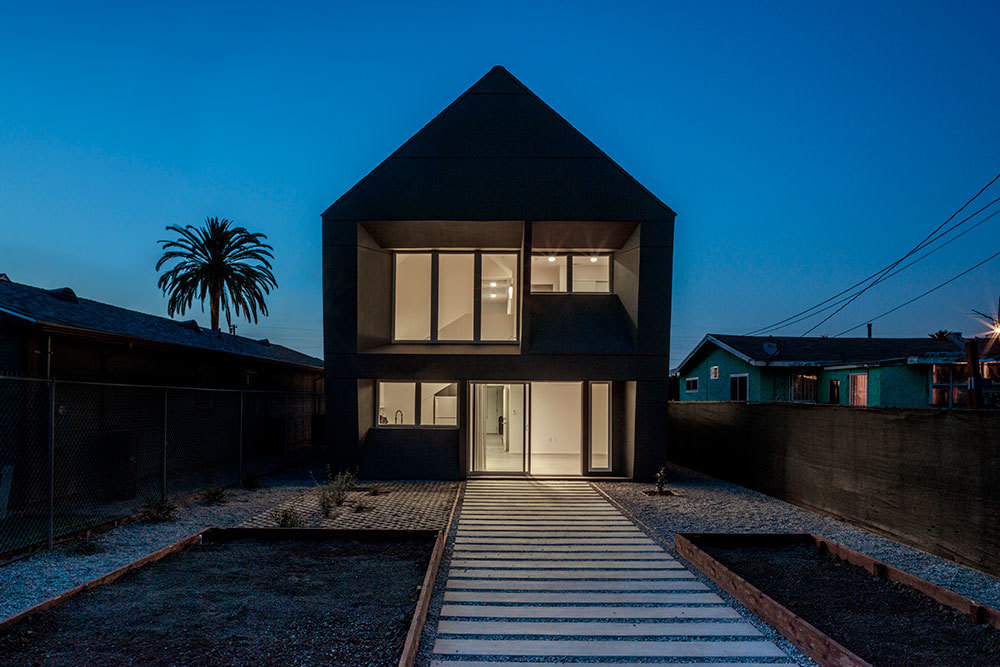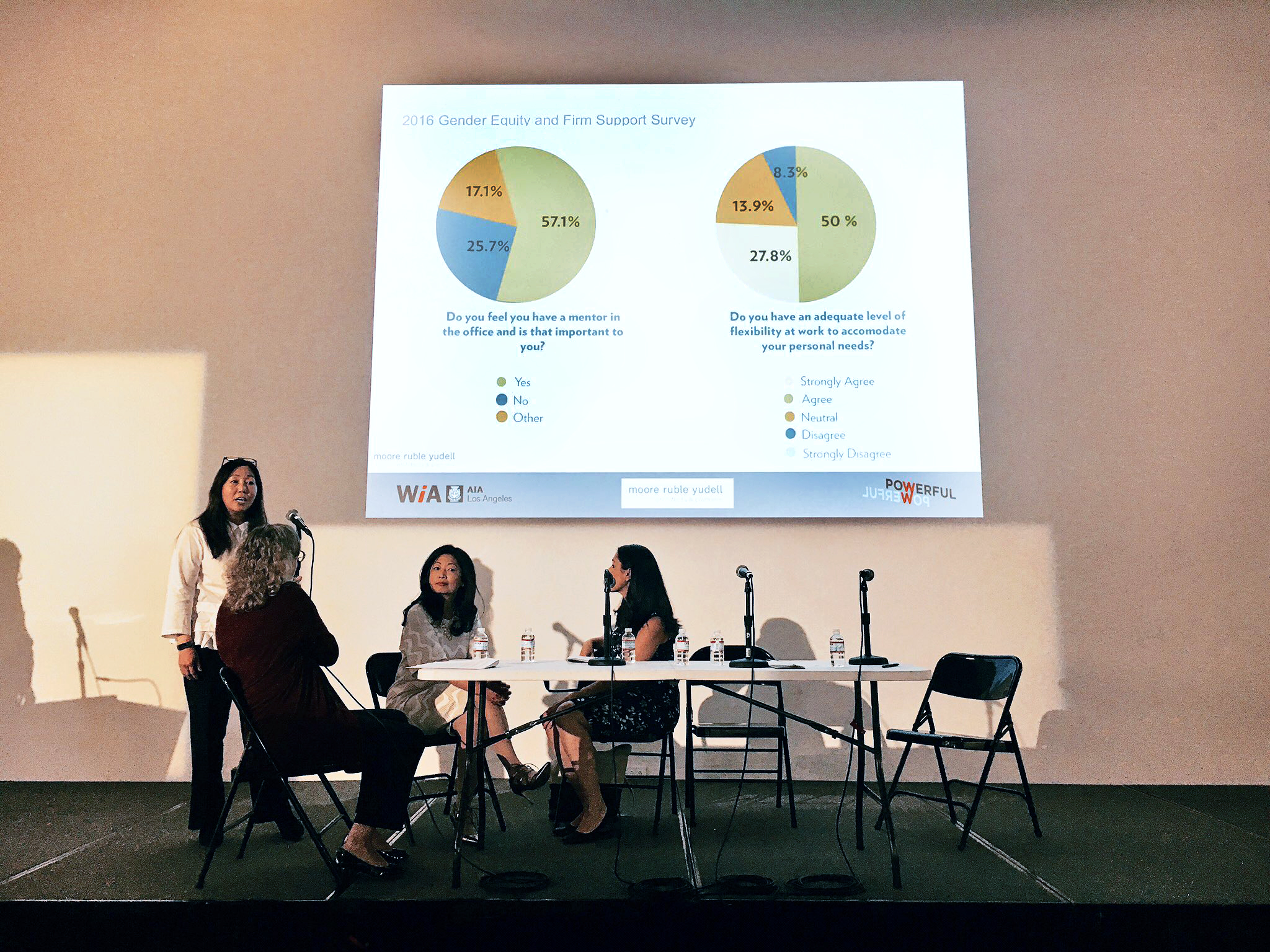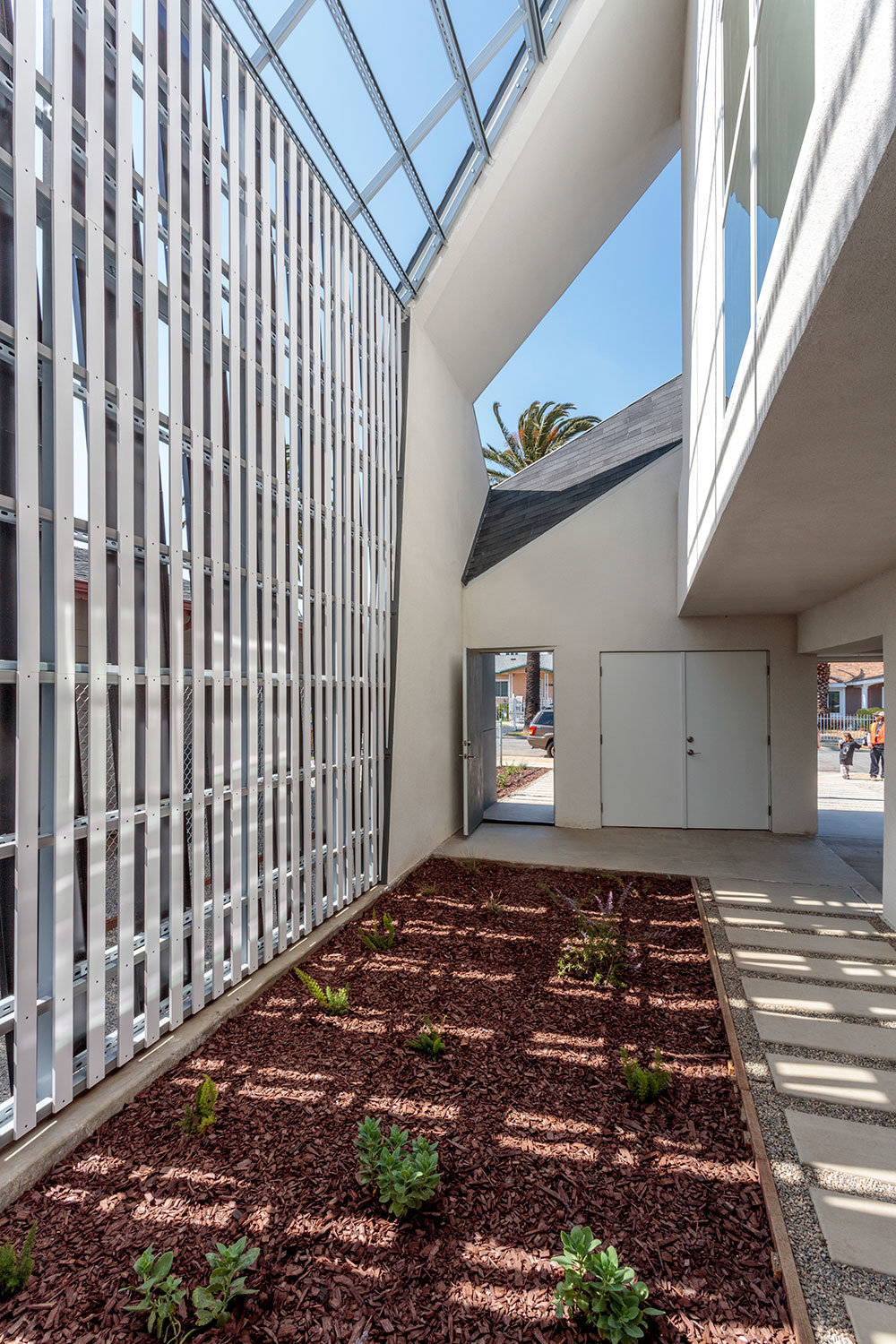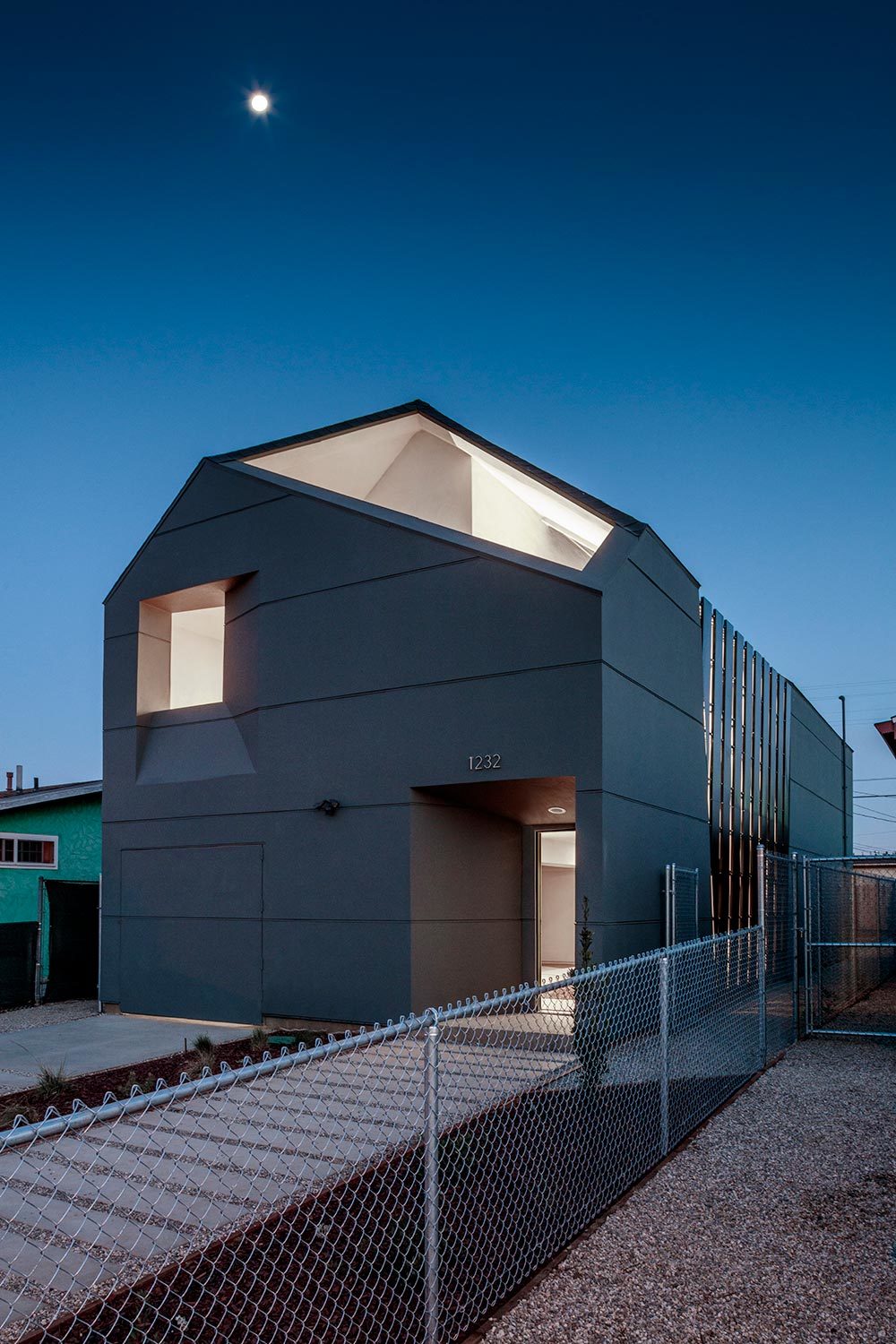SCI-Arc Celebrates the 2016 Design Awards and Powerful: Women in Architecture with AIA|LA
In conjunction with Habitat for Humanity of Greater Los Angeles and Los Angeles County’s 2nd District, SCI-Arc students and studio faculty Darin Johnstone received a Merit Award in the AIA Los Angeles Chapter 2016 Design Awards. The winning project, IVRV House, is a three-bedroom, two-and-a-half bathroom house located outside the City of Inglewood, recently purchased by a US Army Veteran. In Los Angeles, high housing costs and low wages have made for one of the least affordable housing markets in the country, and LA City Mayor Eric Garcetti has pledged to construct 100,000 new housing units by 2021 to alleviate the housing strain. While IVRV is only one home in LA of nearly 3.5 million for more than 10 million residents, it embodies a core ideal at SCI-Arc that design innovation is imperative to the greater solution.
“We at SCI-Arc are proud of the students and faculty member Johnstone for receiving this award, and for their hard work and persistence in proving that affordable housing and design thinking need not be opposing factors,” says John Enright, FAIA, Vice Director and Chief Academic Officer at SCI-Arc. “This award sends a welcome and encouraging message to the students, who not only designed the house, but also helped construct it.”
The Design Details
“I think the award signifies a dedication in the architecture community to the ideals we pursued in the project—to create a house that is affordable, sustainable, safe, and beautiful,” says SCI-Arc professor Darin Johnstone. “[Along with the mission of Habitat for Humanity], the project exists because of SCI-Arc’s mission to educate students who engage, speculate, and innovate.”
The project name, IVRV House, is shorthand for “inverse reverse,” because of the way the project flips preconceptions about social housing inside out. An unadorned two-story gable roof, an iconic feature of residential architectural vernacular, is challenged to support the building’s corresponding form. The south end of the roof, at the rear of the house, is tilted and thickened for insulation and to provide shade for inset windows. The north end of the roof, at the front of the house, is cut back to permit northern light into a second-story balcony and bedroom, and ground level courtyard. This protected outdoor environment permits enjoyment of Southern California’s Mediterranean climate, omitting the need for high fences or barred windows. The courtyard entry and carport areas are covered in eco-screens, a uniquely layered sheet material comprised of photo-voltaics, uni-struts, and nano coating, that captures and neutralizes harmful particulates in the air.
According to the competition jury, the slow unveiling of all its secrets was a project highlight. “The project alternates nicely between solid and void,” the Institute shared. “Treating the front and back walls with thick proportions with thin interior walls carefully creates a crafted proportion and entry sequence.”
Under the direction of Johnstone, the Habitat studio class worked on the house as part of a thesis project. “This let us learn—first-hand—how building materials and components come together in real life, after all the research and digital drawing,” says Howard Chen, M.Arch 1 student at SCI-Arc. “Working alongside the homeowner and meeting people in the neighborhood was a humbling experience that showed the positive effects of innovative design, even at the small scale of a single family house.”

Reason to Celebrate
The AIA|LA honor comes on the heels of the third annual Powerful symposium. The conference, hosted by AIA|LA at SCI-Arc’s Arts District campus, featured women leading the design profession through shared successes, redefined protocols, and new conventions in architectures. The event was presented in conjunction with Women in Architecture (WiA), Association of Women in Architecture + Design (AWA+D), and the National Organization of Minority Architects (NOMA).
“SCI-Arc prides itself on being an open, inclusionary and diverse environment for ideas,” SCI-Arc’s Enright (and symposium panelist) says. “We were pleased to host the Powerful: Women in Architecture Symposium again this year as it reinforces, particularly to our students and faculty, that SCI-Arc is a place where todays most pressing issues continue to be discussed, debated, and brought to light.”



